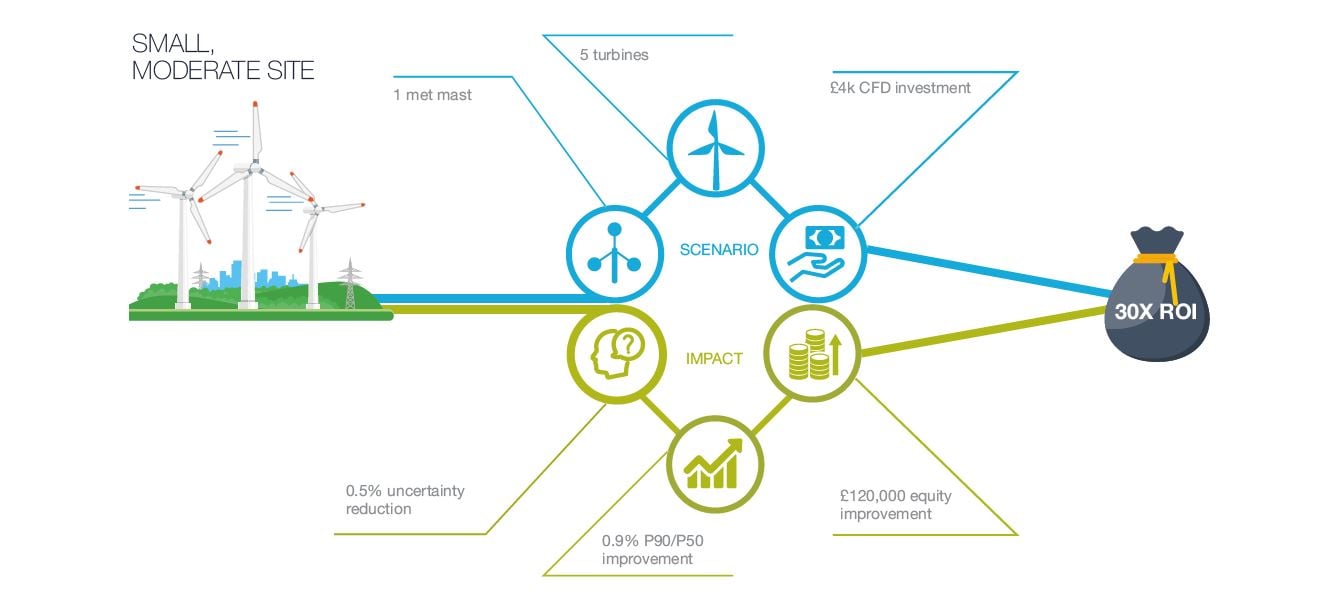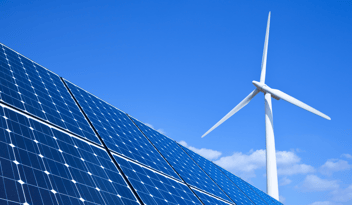
Improving project financing with CFD – a no brainer
It is no secret that project margins for investors and developers are under pressure. Auction schemes are driving down costs, whilst challenging site locations deliver an added CapEx related headache. There is a solution that can improve the outlook significantly - Computational Fluid Dynamics (CFD) - but this is often underestimated and overlooked.
Using CFD in pre-construction energy yield analyses (EYA) can provide a return on investment of over 30 times, by delivering a more accurate energy yield prediction. On top of this, further benefit is gained by using CFD to optimise turbine layouts and ensure well sited measurement equipment.
For a relatively small investment, generally a tiny percentage of development costs, CFD can be added to a standard energy yield assessment, lowering uncertainties, particularly in complex terrain, and helping to avoid poor siting locations. This leads to a better performing wind farm and has a positive influence on getting good terms with the banks.
What benefit does CFD have in real terms?
Consider a typical, relatively small, wind farm development with moderately complex terrain and some areas of woodland around the site. A single 70m measurement mast is installed and a five-turbine layout is planned. To illustrate the financial implications of CFD investment and its associated uncertainty reduction, see below a simple scenario comparison between EYA results with and without use of CFD.
Adding CFD to an EYA can provide a substantial benefit even for a moderate site

The CFD-induced EYA uncertainty reduction increases lender confidence, leading to improved loan terms and a reduced equity stake. Even the modest uncertainty reduction presented above leaves the development project with an additional GBP 120,000 in equity. This is a return of more than 30 times the initial investment.
With modest reduction like this on a small, moderately complex site, it is easy to understand that the returns would be far greater when scaled up for a larger project, or when there is a larger reduction of uncertainty.
How does CFD compare to traditional modelling?
CFD provides greater accuracy than previously possible, largely because it explicitly simulates the generation and evolution of terrain generated turbulence around a wind farm. This is an important distinction from the traditional model which applies large approximations to turbulence.
CFD predicts the wind conditions at every point in a three-dimensional mesh placed across the site. Skilful consideration of these predictions can enable much greater understanding and easier communication of the wind flow across a site through visualisation.
Ultimately, higher accuracy (using CFD) leads to reduced uncertainty and a more robust business case.
“For a few thousand Euros, CFD analysis enables developers to deliver a higher performing wind farm. Using the latest cloud-based computing, we can now turn around CFD simulations swiftly and our clients are seeing this as an integral part of the pre-construction analysis process. Our models are robustly validated and our accuracy, when compared to operational data, is exceptional.”, said Joel Manning, Head of Research at K2 Management.
“The benefit of using CFD is highest when applied at an early stage of the project as it can support the measurement campaign design and the optimisation of the turbine layout as well as reducing uncertainty.”
With margins squeezing tighter and tighter, it’s a no brainer to look at CFD early in the development phase of a wind project to give all stakeholders a better chance of a good return on investment.




